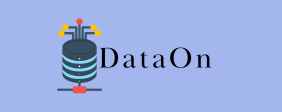Their customers want Shelf full of shampoos. A male consumer reads label after label, trying to understand what makes one type different from another. After all, if they are all for hair, they must fulfill their main function: to wash it. However, there are many types and they have complex, compound, long, indecipherable names. Indecision reaches the point of giving up, and the return home without any hair product. The task will have to wait for another day, with more time or with a woman around. Why don’t they make shampoo like they used to, one for normal hair, another for dry hair, and another for oily hair?
Countless options for the same function
similar but distinct types, which lead anyone cyprus phone number list from consumerism delirium to total indecision. Of course, theoretically, what is on the market their customers want was made and designed with the buyer’s needs in mind, so that they are truly satisfied with what they purchase. Well, we intend to meet all of this, but we rarely accept that our vision may not be ideal for other people.
We are talking about really thinking and working
so that our customer feels good, identifies with what we offer and has their needs met (or even their problems solved). And everything needs to be easy to use, understand, access and find. The more exaggerated and complex it is, the harder it is to be assimilated as a benefit and solution. Believe me: this is a rare and unexplored differential for most companies and professionals even today. It is this differential that learn about the different types transforms an electronics company into an Apple, for example, legendary, with record revenues, that can sell in any circumstance all over the world, that is a reference in usability, in consumer-oriented thinking and that values people’s experience and making their lives simpler. What is the formula? Maybe we need to hear more.
What does our customer want, what do they need?
We don’t have much patience to listen. We’ve been turkey numbers database exchanging more messages on our cell phones than calling people we interact with. In the corporate world, there are their customers want plenty of educated people with sophisticated techniques, ready to put their vision into whatever they offer the market.
However that’s not what makes the best product or service
We need to go further! Let ‘s think about an organizational culture that prioritizes listening to consumers, listening to employees who see what the customer is looking for, and keeping everyone on the team focused on a single purpose: keeping things simple and meeting people’s needs.
Customers don’t want to understand processes
they want agility. Customers don’t want an excuse for delay; they want a solution. Okay, so let’s think about some important actions to help with this task.
